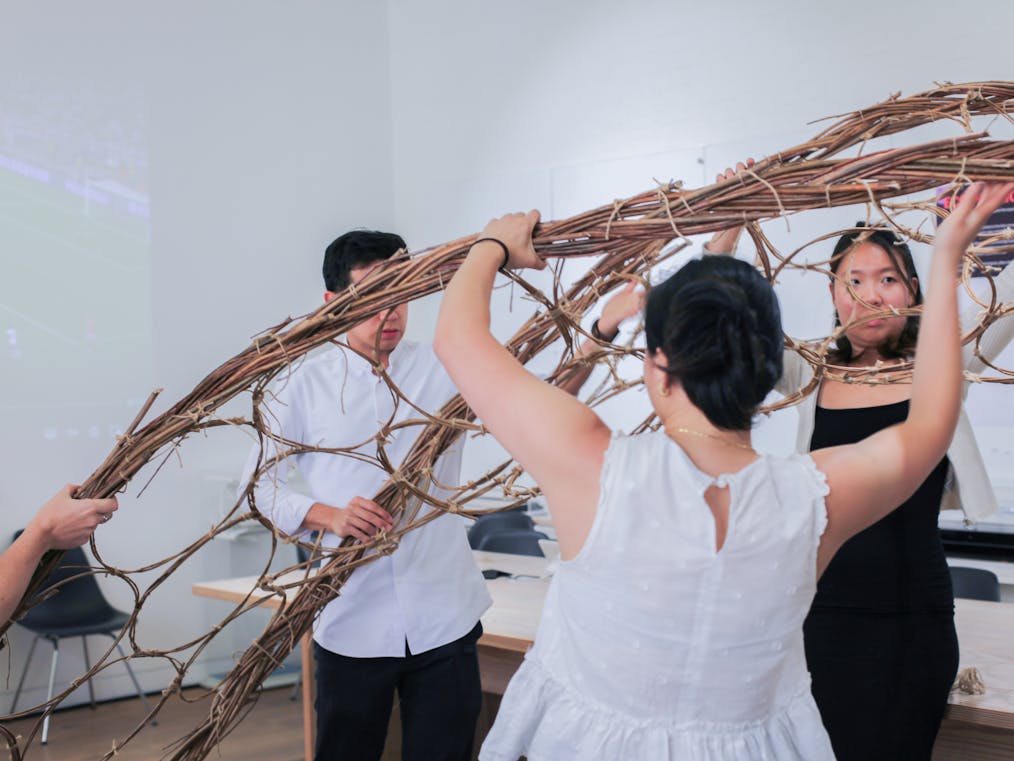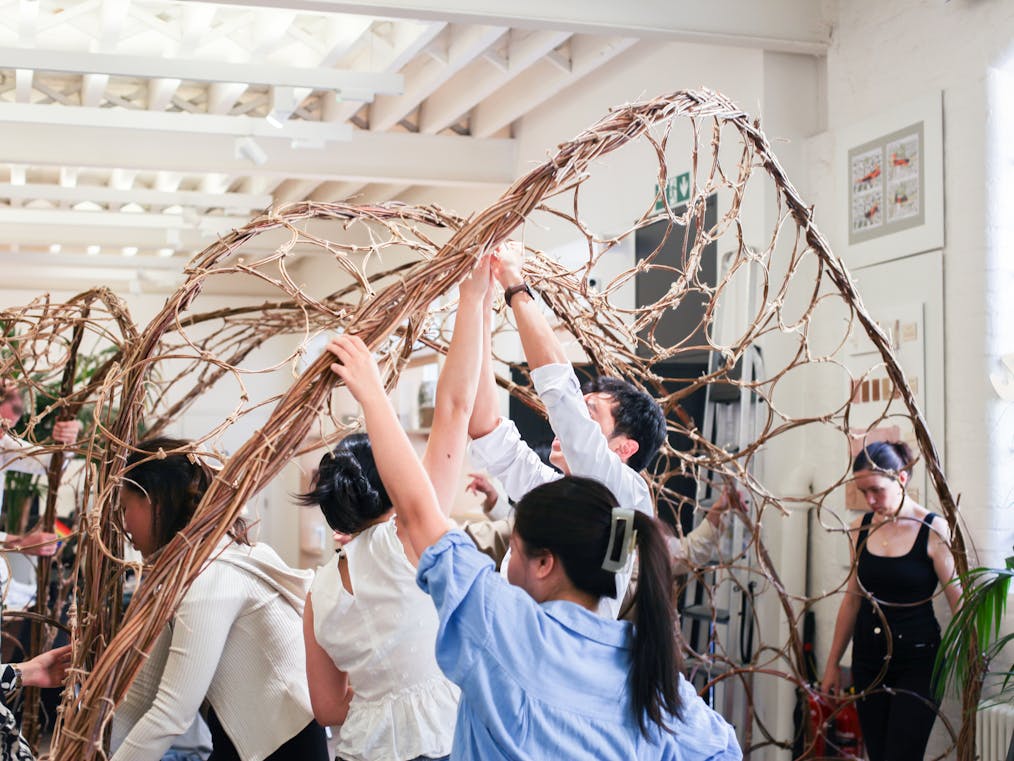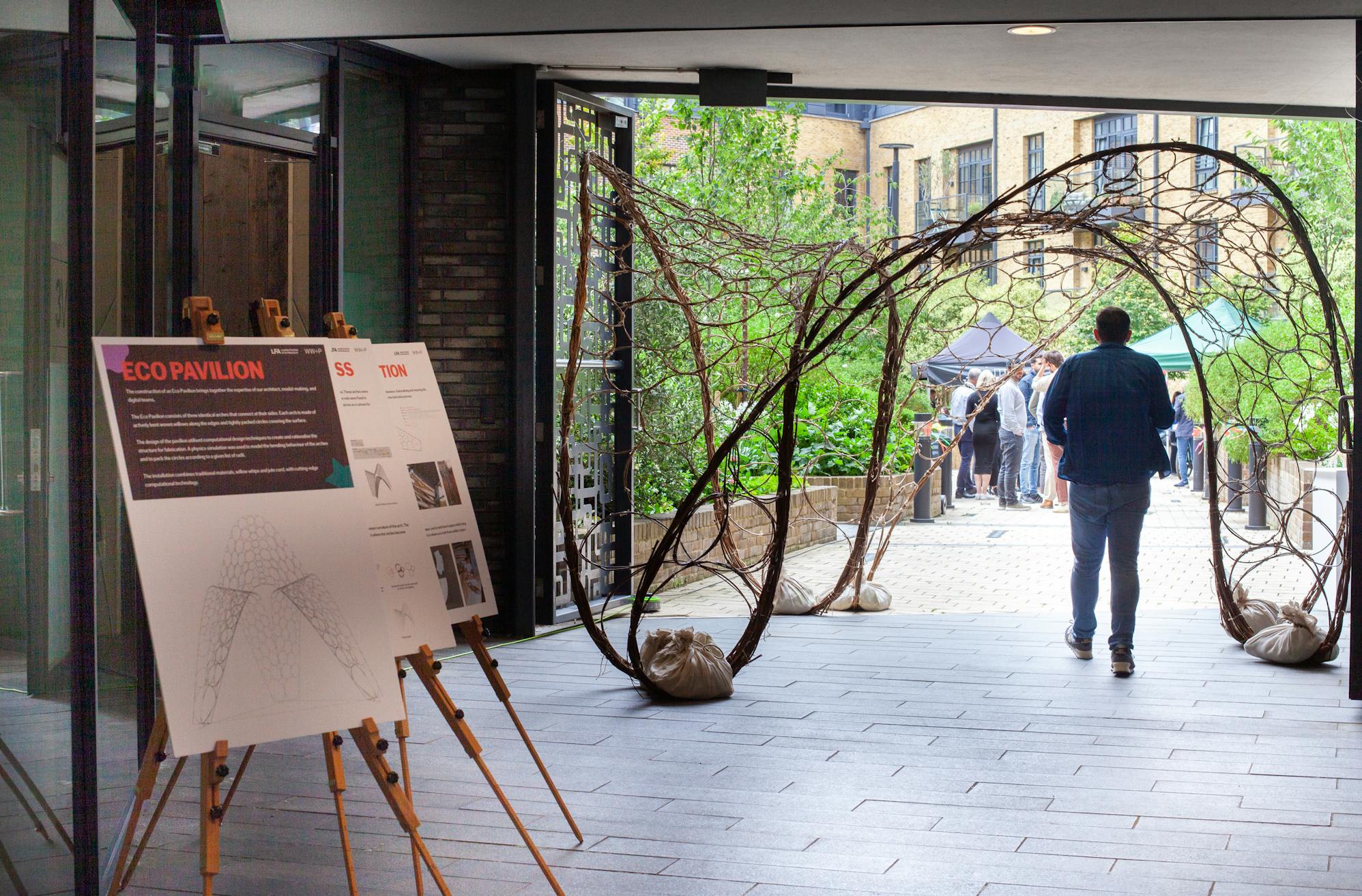

Reimagining our Studio for the London Festival of Architecture 2024
Giulia Pustorino, Digital Engineering Lead at WW+P, reflects on the willow Eco Pavilion built for our Studio Lates opening in our London Studio as part of the London Festival of Architecture (LFA) 2024.
“LFA is a month-long celebration of architecture and city-making, offering our research and development group a unique chance to reimagine the way we build and live. From our initial meeting, it was evident that we should use the LFA theme of ‘Reimagine’ to address the industry's most pressing issues by exploring alternative approaches to construction and living. Our model-making and digital experts collaborated to rethink environmental and social challenges as opportunities for innovation and improvement. We decided to make a demonstrator structure that reflects our approach as a practice, using local, natural materials for a design that combined new computational design methods with traditional fabrication techniques.
“The Eco Pavilion consisted of three identical arches that connected at their sides, made of actively bent woven willows along the edges and tightly packed circles covering the surface. The installation combined traditional materials – willow whips and jute cord – with cutting-edge computational technology. It brought together the expertise of our architect, model-making and digital teams.



“The design used computational design techniques to create and rationalise the structure for fabrication. Manually drawn arches were inputted into the program and anchored at the base, then run through a physics simulation to model the bending behaviour. The resulting form-found rods were used to create a ruled surface which was used as a canvas to pack the circles. The location and diameter of the circles were determined based on the mean curvature of the arch – the higher the curvature, the smaller the circles, resulting in a gradient effect where the circles became smaller as they approached the apex of the arch.
“To make the willow malleable, the whips were soaked in water. The team 3D-printed jigs to help bend the willow into circular shapes and to hold them in place while tying the joints. Each arch was made up of 86 circular willows with seven unique diameters. Rationalising and reducing the number of unique circles allowed the team to speed up the fabrication process.

“The Eco Pavilion was displayed in the studio for the whole of June. Our landscape experts are captivated by the sculptural and practical advantages of the arches, and plan to reuse them to define new paths, borders, and beds in nature, as well as experimenting with combinations of climbing plants. The material's flexibility allows for curvaceous, undulating designs and smart geometric precision, either blending or contrasting with the surrounding environment.
“LFA allowed us to explore the convergence of sustainability and technology, merging them to develop inventive design solutions. We believe our profession extends beyond constructing and extends into advancing research that reimagines how we create buildings, spaces, and infrastructure with lasting impact. By focusing on the human experience, we can create healthy, uplifting places that future generations can enjoy.”



“Projects like these are great at bringing people together from all over the studio. And really fun to be involved with! By using lightweight and sustainable materials is it possible to make relatively large structures even with tight budgets. This allows us to test experimental approaches that are still closely aligned to our core values at WW+P. People-Focused, Inventive, Responsible.”
Toby Loughton, Head of Model Making